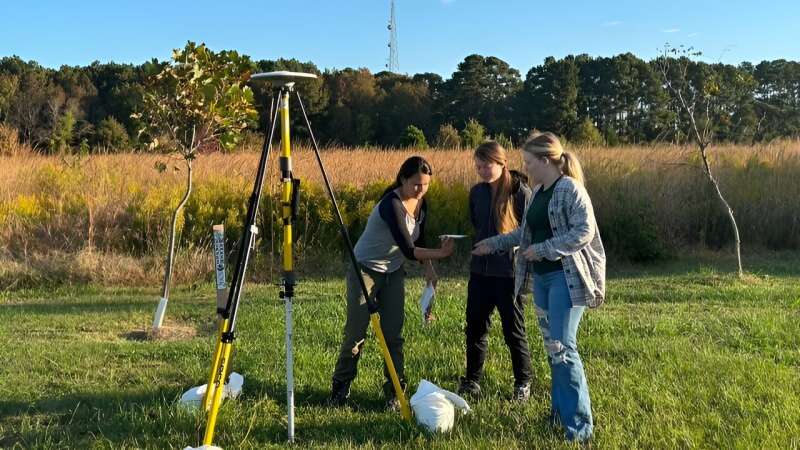This article has been reviewed according to Science X's editorial process and policies. Editors have highlighted the following attributes while ensuring the content's credibility:
fact-checked
peer-reviewed publication
trusted source
proofread
Researchers forge more open access data for studies of the Earth's lithosphere

Crust and lithospheric mantle—the thinnest and thickest layers of the Earth's lithosphere—and a wide range of dynamic processes that deform them can be studied by using high precision geodetic data taken directly from Global Navigation Satellite Systems (GNSS). GNSS data and data products can measure and help the user understand such factors as the Earth's geometric shape, orientation in space, and gravity field.
While working with these systems in her studies of the lithosphere, D. Sarah Stamps, associate professor of geophysics in the College of Science, recognized a void: There really were not that many GNSS resources available to users like herself.
"I am a firm believer that creating open, reproducible science is the way forward in the sciences," said Stamps. "My own experience convinced me that a review paper aimed at helping scientists find open access GNSS data and data products for their work would be an important and welcomed undertaking, especially since no one had written a review paper tackling this topic."
Stamps teamed up with colleague Corné Kreemer, a research professor at the University of Nevada, and the result of their work, "Open Access GNSS Data for Studies of the Lithosphere," has been published in the July issue of the AGU journal Geochemistry, Geophysics, Geosystems, also known as G-Cubed.
The review paper details how GNSS data relevant for lithospheric studies are determined, including what corrections and errors must be considered; describes several applications of certain GNSS data, such as quantifying tectonic plate motions; and provides numerous open access resources for GNSS data and data products that are valuable for studies of the Earth's lithosphere.
Stamps said it was a bit challenging to figure out where many of the international open access GNSS data and data products are located online because not all scientists are currently publishing their results in open access repositories.
In the paper, the authors describe how GNSS data and various aspects of the position time-series can be used to gain insight into the structure and properties of the lithosphere and the forces that act on it. The GNSS time series refers to the Global Positioning System, a constellation of 31 satellites used for navigation and precise geodetic position.
"By removing known loading signals and/or filtering the time-series, the precision of GNSS time-series and their derived products have increased in recent years and these improvements in precision have allowed for new discoveries such as mantle plume related surface deformation and aseismic slip preceding great subduction zone earthquakes," said Kreemer.
Two ultimate research goals, Stamps said, are to associate GNSS-constrained vertical land motions with predicted rates due to dynamic topography and to leverage precision GNSS data and data products to better understand subsurface processes and structures, such as for magmatic systems, through either inverse or forward modeling.
"We wrote this review paper to help users of GNSS data/products to study and better understand processes that happen within or beneath the lithosphere," she said. "Ideally, it will help us to correctly leverage those data and products to investigate processes that affect our lives, like earthquake sciences and volcanology."
All GNSS data discussed in the paper are already openly available. Section 8 of the paper, titled "Resources," provides direct links to numerous open access GNSS data and derived products.
More information: D. Sarah Stamps et al, Open Access GNSS Data for Studies of the Lithosphere, Geochemistry, Geophysics, Geosystems (2024). DOI: 10.1029/2024GC011567
Journal information: Geochemistry, Geophysics, Geosystems
Provided by Virginia Tech




















